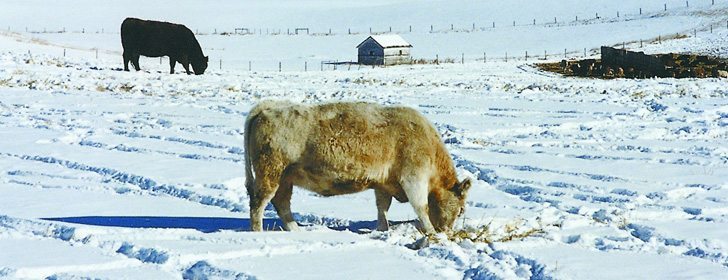Suggested amount of water intake per day for beef cows (1,200 lb. animal)
Low snowfall across much of the Prairies this winter may make it a moot point, but using snow as a sole water source for livestock is a viable option.
Snow is bound to fall sometime this winter and when it does, cattle producers can reduce water pumping and heating costs by allowing stock to eat snow for their moisture needs.
Grant Lastiwka, a forage, grazing and beef specialist with Alberta Agriculture, said a suitable quantity and quality of snow are the prerequisites.
“Soft fluffy snow is a better water source and can be consumed in quantities adequate, potentially, to meet the needs of cows, sheep or calves on low performance ration requirements as the only water source,” he said.
Read Also

Trump’s tariffs take their toll on U.S. producers
U.S. farmers say Trump’s tariffs have been devastating for growers in that country.
Research led by the University of Alberta dating back to the late 1970s showed it takes three days for cows to learn to eat snow. They can consume enough for their needs so long as the snow is not crusted or hard.
Cows also ingest snow while eating stockpiled forage or swaths. Lastiwka said swaths generally have 30 percent moisture and stockpiled forage has 40 percent, which helps meet animals’ moisture needs.
People are told not to eat snow when thirsty because it lowers their body temperature and potentially contributes to hypothermia, but that’s not a concern in cattle.
“The big rumen vat is so immense that any snow being put in there does not have an effect on lowering body temperature. It is such a minute amount of that big fermenting hot mass that it melts and is not an issue.”
Cattle, sheep and horses can survive by eating snow, though producers have to monitor their animals to ensure enough moisture is available, Lastiwka added.
Snow is not recommended as a sole water source for cows in late pregnancy, lactating cows and high performing calves and ewes. Animals in those categories require higher amounts of moisture and may not be able to eat enough snow for their needs.
“We’ve got many producers who have gone to snow systems and have found them very effective over time, but all of those producers are watchful managers and if things don’t work out the way they were hoping for, they are quickly prepared to do something about it,” said Lastiwka.
Alberta Agriculture’s list of frequently asked questions about snow as a water source indicates that cows can go 50 to 60 days with snow as their only moisture source, without any adverse effects.
Other data:
- snow intake by cows does not seem to affect calf birth weight. Nutrition, energy and protein in feed are more significant factors
- cows in early lactation require a water source
- erratic weather is a major disadvantage to reliance on snow. It can harden the snow, forcing producers to take quick action to supply water.
- Water intake (litres)temperature (C)
- 4415 to 21
- 59above 27
















